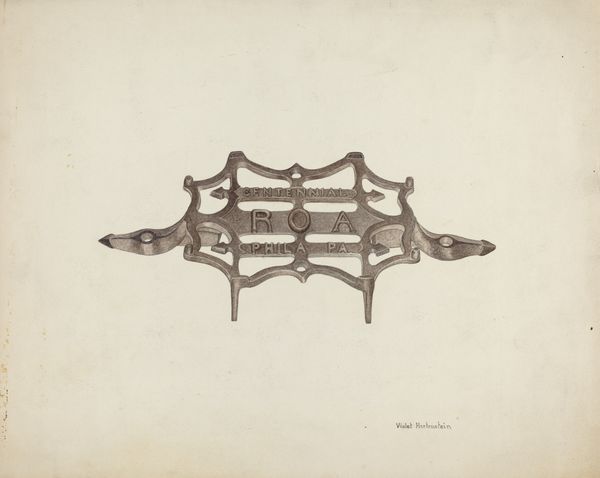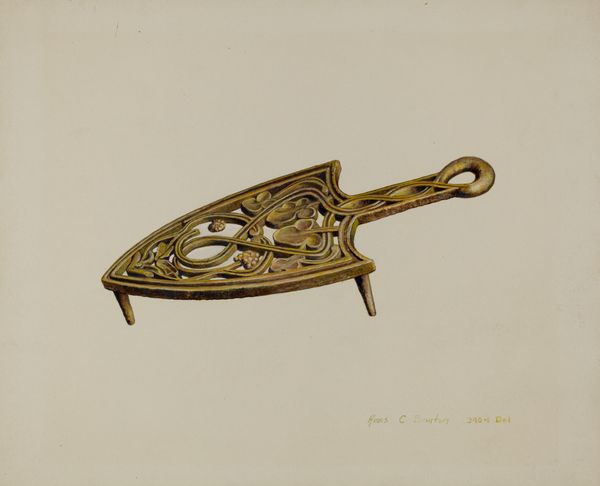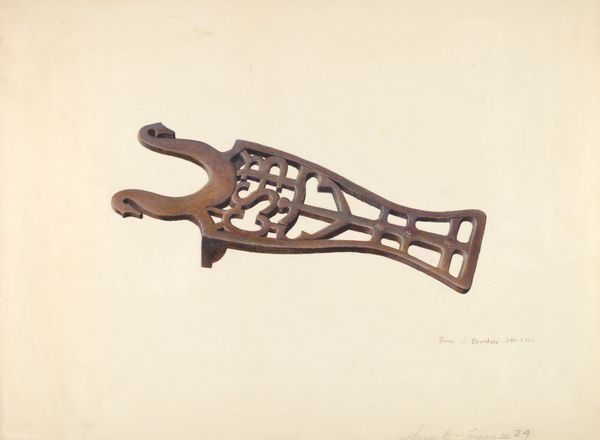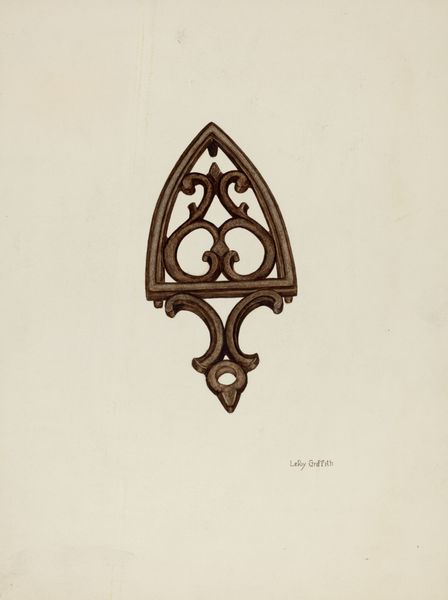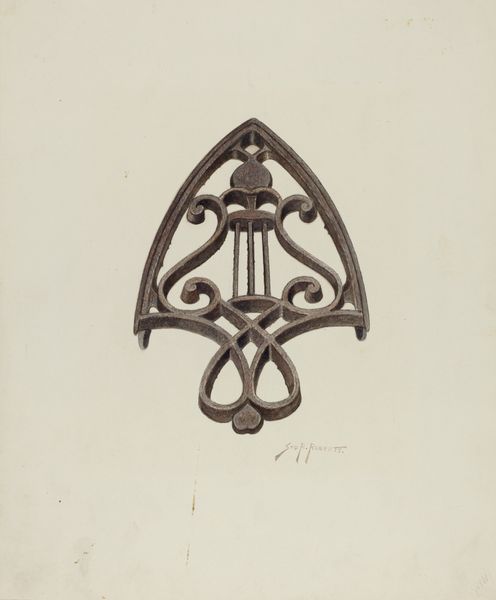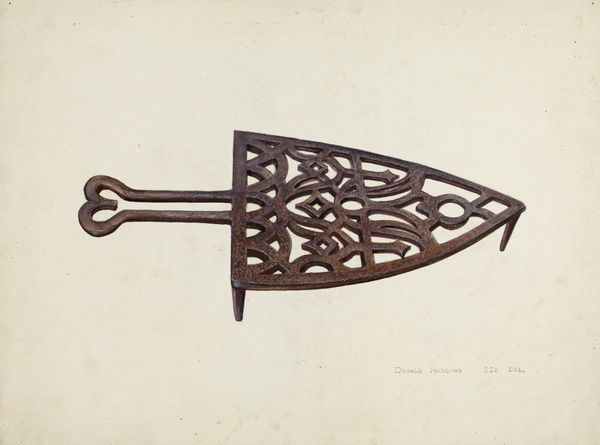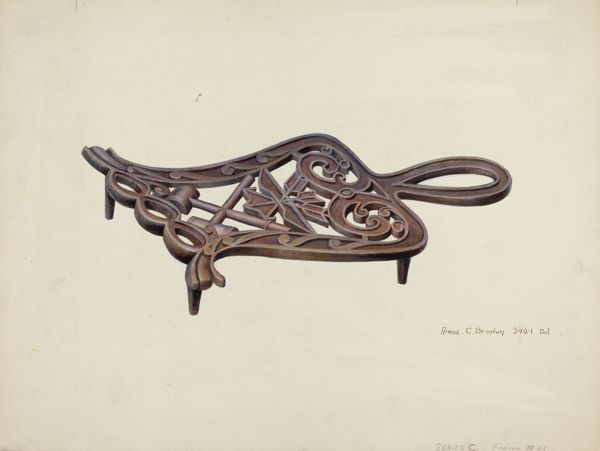
drawing, paper, pencil
#
drawing
#
paper
#
pencil
#
realism
Dimensions: overall: 35.5 x 24.6 cm (14 x 9 11/16 in.) Original IAD Object: 5" long; 2" wide; 5/8" high
Copyright: National Gallery of Art: CC0 1.0
Editor: Here we have Dorothea Bates' "Trivet," rendered in pencil and drawing on paper around 1941. It’s so meticulously detailed, yet the subject matter feels quite humble. What’s striking to you about the way it's been depicted? Curator: The inherent qualities lie in the meticulous execution of the drawing. Consider the modulation of line, the variations in weight used to delineate form and suggest volume. The artist has adopted realism to highlight both the structural integrity and surface variations of the object depicted. Notice the contrast of light and shadow to amplify three-dimensionality. Editor: I do see how she captured the different angles. It is extremely technical in a way! Would you say it focuses less on any deeper symbolic meaning then? Curator: Meaning is intrinsically tied to the structure here. The duplication of the trivet from a top and side-angle position is critical; it presents two facets that are nonetheless tied together in the unified space of the image itself. We are thus presented with a multifaceted, comprehensive vision that is far beyond simply documenting an artifact. Note how realism as a formal property can serve the symbolic, expanding its spatial presence and the object's implied meaning through varied depictions. Editor: So, it's about the many perspectives that comprise a whole and what the piece brings from them individually to build upon itself. Curator: Precisely. The artist focuses not just on rendering but on representing diverse structural outlooks, pushing our perception of the drawing toward a complete architectural understanding. Editor: It changes how I see the use of everyday things, in this case! The technical artistry truly shapes my perception of the humble trivet. Curator: Yes. Form, line, and technical articulation – the vital essence of representation – shape the idea itself.
Comments
No comments
Be the first to comment and join the conversation on the ultimate creative platform.
